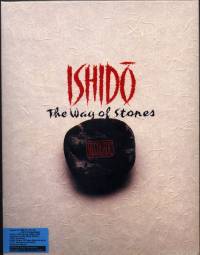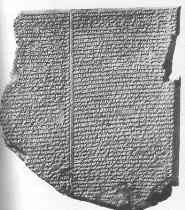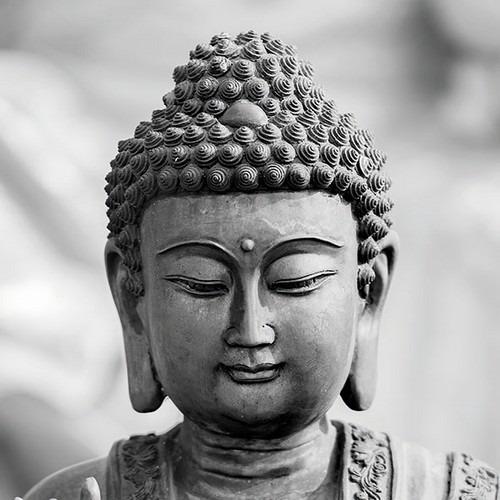The simplicity of the way

"THE SIMPLICITY OF THE WAY"
a teisho by John Tarrant, Roshi
Originally published in: Mind Moon Circle, Winter 1994, pp.8-10.
This text addresses some of the most fundamental and delicate religious issues. Therefore, it should be read, quoted and analysed in a mindful way.
All copyrights to this document belong to John Tarrant, California Diamond Sangha, Santa Rosa, Cal., USA
Enquiries: The Editor, "Mind Moon Circle", Sydney Zen Centre, 251 Young St., Annandale, Sydney, NSW 2038, Australia. Tel: + 61 2 660 2993
THE SIMPLICITY OF THE WAY
John Tarrant, Roshi
Teisho given for Jukai Ceremony held at Gorricks Run during the Easter Sesshin, l994
We are here for the ceremony of refuge, one of the joyful ceremonies of the Zen universe. In it we take up the way of the Buddha; it is a kind of ordination for people who nevertheless live in the world. Like many such things it really recognises a kind of inner connection, an intimacy and commitment, that has already happened. But through that recognition mysterious things happen mysterious further things happen which is the point of ceremony anyway. I think of it as a kind of inner wedding to the wisdom path; its an initiation. When we take refuge we say that whatever else is in my life, the opening of insight and wisdom and compassion is at the core. And whatever else I want for myself I want those things first.
The precepts are boundary markers, I suppose. I think of the way in the ancient world people used to take a plough and oxen or horses and plough a big circle and mark it with stones: that was the beginning of a city, and within that circle magical things could happen. This too is a kind of boundary marker. The precepts themselves are expressions of the way the world looks from the point of view of Buddha nature, before they're anything else. They're actually descriptions of reality. If you want to conform to reality and to what makes sense, this would be a good thing to do.
In the Mahayana tradition precepts are not taken literally. If somebody comes along running and heads off to the north, and somebody else comes along running behind them with an axe and says Where did he go? you say, He went south. How the precepts are helpful is by bringing something into consciousness, and especially by bringing the costs and sacrifices of our behaviour into consciousness. We translate the precepts as I take up the way of . . . not lying, and so on. Nobody is telling you that you cant get drunk, but the precept says that if you do there is a sacrifice involved. Some people call it a hangover. But its not just that: theres a sacrifice of consciousness, theres a sacrifice of a night of your life, there are many things. So if you want to get drunk you had better really want to get drunk.
And its the same with all kinds of things. We tell many lies in certain ways. Sometimes its hard to tell; we can be too literal about this. We don't have to share every passing feeling we have about somebody: I hate you today! Thats not a matter of observing the precept about lying. But the ways in which we distort other peoples versions of ourselves and try to control other peoples versions of ourselves are my riadjust as an example and when we take the precepts we realise that theres a great cost to us in such distortions, that we lose our own affective connection with the universe. And we may impress somebody for a little while, but usually people know when we are lying anyway. Because in some sense there are no secrets in the cosmos.
So the rules are not meant to make you unable to breathe or to strangle you, but they are meant to show you that behaviour is a very deep and interesting matter And if we pay attention to our human karmic limits then something else will open out enormously. If you observe and respect human karmic limits you are also observing Buddha nature and you are observing the interconnection of all beings. And if you do that you find that the field has grown very vast and is full of trees and stars and wind. And that is the point about refuge. When we take the vows we are vowing to enter the simplicity of the way, knowing that that simplicity makes everything shine, everything dance, and theres nothing more precious in the world. And thats why we love it.
Its also a sign of gratitude for the Way. On my own transmission documents my teacher said, People have sweated blood for this lineage; people have died for this.
There is gratitude to those who went before, for thousands and thousands of years; down to the amoeba; and to those who will come after. How many generations there will be we do not know. But this is one of our gifts to them as well, that we too hope for life and love life and want to pass it on, pass on the enlightenment of the Way.
So let us begin. . . . The way we do this is that the vows are announced and then we all chant together. And the initiates each have prepared their own words. Four people are taking refuge for the first time and one person is renewing her vows. And in turn the initiates will read their words for each vow. . . .
We now come to the presentation of the robe of the Buddha, the rakusu.
This robe is black, signifying the earth itself; and the mystery underlying all things; and a kind of non attachment that is not so much cut off from things but the kind of non attachment that comes from allowing all things, a generous non attachment.
The robe is made as you can see of many small patches. Traditionally it was made of pieces of thrown-away cloth sewn together, patched together. But also this is the patchwork of the earth itself, the wheat fields, the rice fields, that which gives us sustenance. It represents the field of the Dharma, in which all things are contained. Taking up the precept is not a regression to puritanism, it is understanding in a broad fashion what it is to be human, what it is to love, what it costs to love life, and finding within that an integrity that can hold all these incompatible things together. That integrity is usually called enlightenment.
And that is symbolised by this round ring here. Circles symbolise many things everything, the mystery that underlies everything, that is empty. It is just a round circle too.
On the back of the rakusu are crossed casuarina needles needles from an ancient Buddhist tree signfying that this is a mountain path, signifying that it takes you deep into the journey into the true self. As Rilke said, so that we walk into the silence, for hours meeting no-one. Also the needles are the green shoots of the Way, the manner in which the Way will spring up like dandelions in a pavement in the city. Somewhere, no matter what state you are in, you can always find a little green trace of it. There are two needles crossed with each other. Every time you are caught in an opposite, at bottom there is always some unity there, if you can find it. Theres always some way to hold the two together. And that is the enlightened task. So that we can find the true action.
We also have names; we are given a Buddhist name. Which is another way to mark that we are putting wisdom and awareness at the centre of things. We put on the robe and we may say it becomes us: it turns into us, we turn into it. Its the same with a name. It is sometimes thought that if you know the true names of things the true name will bring something into being; the old idea that a true name is a kind of spell, a magical act of imagination that makes things real. And the naming in Buddhism makes the Way real. So that its not just on our skin; its in our cells and our bones.
Sometimes when people take refuge together I give them one name in common, so that they become part of the same tribe, so to speak, the same Zen tribe. This time I have done that, and the tribe is the Wave tribe. Wave signifies something connected to the ocean, a unique form that emerges from the great ocean underlying everything and then goes back where it came from just as we do. So it carries the power and the beauty and the transience of life. One person was not so fond of water so he joined the Zen tribe which is part of the Wave tribe; or perhaps the Wave tribe is part of the Zen tribe. He is linked in that way. . . .
When you take off the rakusu, you fold it so that the writing is on the outside, because that helps it to hang and slide it inside the bag you have made. There are different ways to put on the rakusu, but I will show you my suggested way. This is embarrassing to many people which is a good reason to do it. You put it on your head - there is no shame in the Buddha-dharma. And we chant this verse:
I wear the robe of liberation
The formless field of benefaction
The teachings of the Tathagata
Saving all the many beings.




















